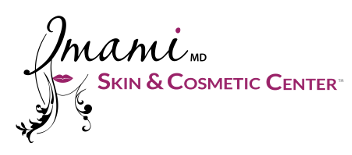
Acne is bad, but acne scars can be even worse! Here are some tips for avoiding and even fixing those scars:
Why Am I Getting Acne Scars?
Hormonal changes cause the body to create more sebum, which is the oil that protects and moisturizes your skin. Some reasons for these changes include diet, puberty, menstruation, menopause, and childbirth. When sebum has a higher proportion of fat, your skin might feel oily. You can also produce too much sebum, which alongside sweat, dead skin cells, bacteria, and dirt can clog up your pores.
When debris is stuck on the surface of your skin, like a blackhead, it’s less likely to cause a scar. Pimples are deeper in the skin, so they’re more likely to cause long-term scarring.
Avoiding Acne Scars
The best way to avoid acne scars is to avoid acne, so avoid things that clog your pores.
1. Avoid excess sebum with a low-glycemic diet, avoiding carbs and sugars in favor of vegetables, some fruits, meats, and beans. Cow’s milk, but not yogurt or cheese, has also been linked to acne.
2. Make sure your face stays clean and avoid touching it too much. Use a daily face wash with the right pH for your skin. Removing too much oil leaves your skin dry and prone to damage, so a non-comedogenic moisturizer without oil might be a good idea.
3. Use a gentle exfoliant every week. Harsh exfoliation can irritate and dry the skin, while exfoliating with a dirty material can infect your skin.
If it’s too late to avoid acne, don’t touch it. That can spread bacteria deeper into the pore, to surrounding skin, or it can cause trauma (scarring). The best solution is to wait it out while treating it gently. As soon as you notice it, apply acne products with benzoyl peroxide or salicylic acid, and keep washing and exfoliating.
Getting Rid of Acne Scars
If you already have scarring, there are a few things you can do. Scarring happens when the body doesn’t heal itself properly, but that can be improved with collagen repair.
1. Chemical Peel
One way to induce collagen repair is to remove the outer layer of skin. This can be done with an acid-based solution that is applied with a peel. That allows it to be used in small, precise areas, or over the whole face. The collagen repairs scars by starting the healing process again. It can also help with discoloration of the skin, which is a separate issue to acne scarring but can look worse. You might need several peels to see the best results, with time in between to allow your skin to recover.
2. Laser Resurfacing
A laser can also trigger the body’s natural renewal to reset a scar back to normal using collagen. Lasers also treat wrinkles, discoloration, and other issues.
Learn more about laser skin resurfacing
3. Fillers
Dermal fillers give a subtle shaping effect to smooth out bumps, holes, and imperfections in the skin. They can be injected in many different locations including the lips. There are several options for the type of filler, including JUVÉDERM®, Versa®, and Bellafill®.
Learn more about dermal fillers
4. Microneedling
Microneedling is a better version of dermarolling, performed by a trained physician, dermatologist or aesthetician. It punctures the skin with tiny needles, just long enough to trigger the skin’s healing. This creates collagen and elastin at the puncture site, which properly fixes the scar tissue. It also has the benefit of smoothing wrinkles.
Remember that at-home dermarolling has risks, most importantly infection, and won’t give you the same results as microneedling. Microneedling requires around five sessions to show real results. Studies show that it’s both safe and effective when done properly.
If you’re not sure what you should do, consulting a professional cosmetologist should give you a better idea, and even a customized plan for you!
